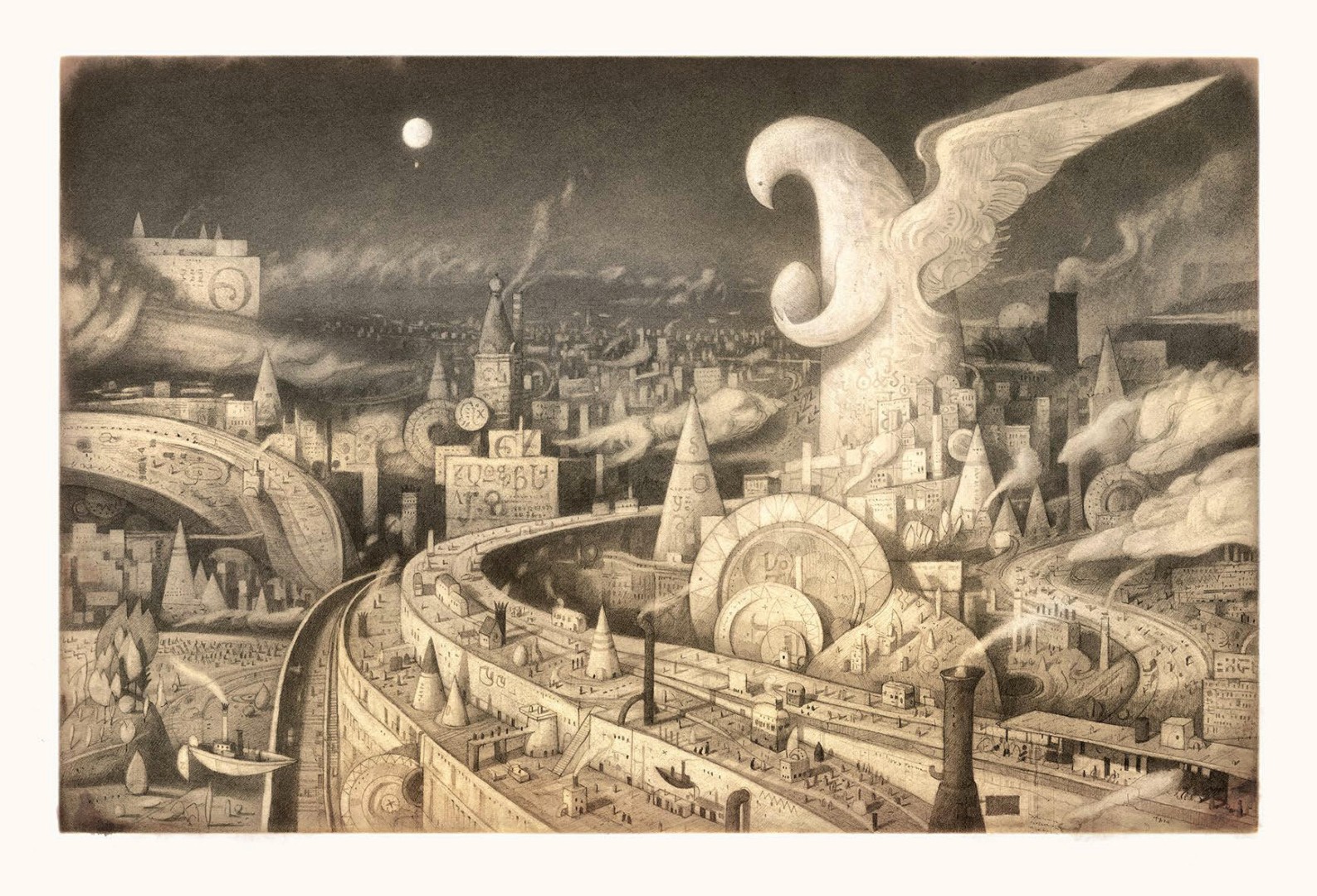
I was completely blown away by the
work of Shaun Tan, The Arrival. This
comic has so much symbolism and beautiful supporting imagery that works together
to tell a wonderful, cohesive story. Even though the world Tan had created was
completely fictional, it was still easy to understand for the reader. This is because
he used classic storytelling techniques to make his illustrations speak without
words. From the very beginning, it was obvious what was happening despite lack
of dialogue: a man living in a dangerous city must move away from his beloved
family. The reader is able to grasp that through the descriptive imagery of the
woman’s hand touching the man’s, the young girl, and the monster-infested city.
When reading this comic, it felt like a metaphor for immigration. The man’s
hometown is very mundane-looking compared to the fantasy world he moves to,
which is probably what a lot of immigrants feel at first when they move to
America. Trying to find odd jobs, asking strangers for directions, and not
understanding the language or culture are all very relatable to immigrants.
Other storytelling techniques Tan
utilized were tone and gestures. The use of tone in The Arrival really emphasized the mood in various points. The shift
of emotion on page 88 is a perfect example for this. All you can see are a pair
of legs, but the storytelling goes far beyond what is being shown. From being a
warm, sepia tone to a blurry, dark grey, you can feel the happiness and
excitement fade away from the soldier without even seeing his face. Moments
like these really reminded me how powerful pictures can be without any written explanation.
He also used gestures and clichés to mime clear actions through the characters,
like pointing and waving.
After reading, I found a greater
appreciation for wordless comics. It made me think of the phrase “a picture’s
worth a thousand words,” and this book goes above and beyond that statement.
When something new appeared, Tan took the time to draw out the process and
explain the mechanics of the world. He used what we already know from our world
as a base for his creations like clocks, transportation systems, food, animals,
etc. And by doing this, he was able to relay an important message in a more captivating
and visual way. It is clear to see that Tan is quite knowledgeable about
storytelling. I appreciated the bookend technique he used to tie the whole
story together at the end. The last illustration of the daughter giving
directions to the woman is showing a cycle of kindness and acceptance, where
the newcomer adapts and passes on knowledge to new immigrants. I believe that
this is the type of lesson the author wanted people to learn from his story.
Comments
Post a Comment